#hunza valley region
Explore tagged Tumblr posts
Photo
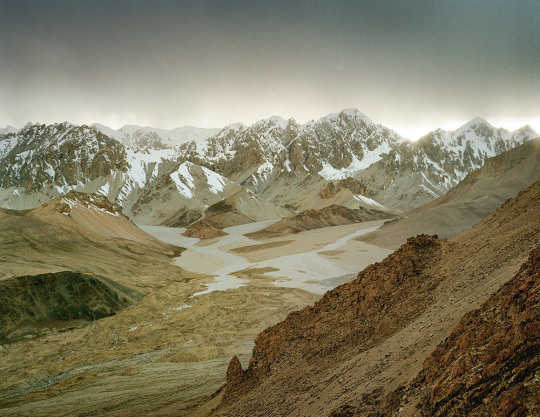
Matthieu Paley captures high mountain peaks from the northern Hunza Valley region - Asia
#matthieu paley#photographer#national geographic#mountain peaks#hunza valley region#asia#landscape#nature
61 notes
·
View notes
Text
Passu, Gilgit Baltistan, Pakistan: Passu is a small village situated in the Gojal valley of Upper Hunza in the Gilgit Baltistan region of Northern Pakistan. Located along the Karakoram Highway, Passu is a renowned tourist destination. The village is celebrated for its landscapes & breathtaking views of the 7,478-meter Passu Sar mountain, the Passu Glacier, and the Passu Cathedral. Wikipedia
#Passu#Passu Cones#Gojal valley#Upper Hunza#Gilgit Baltistan#Karakoram Highway#Passu Sar#Passu Glacier#Northern Pakistan#Pakistan#Asia
201 notes
·
View notes
Text

Zamrad Begum and Nasib Sultan cutting wood (for cooking and heating) in Zor Abad, a winter pasture two hour walk from Hussaini village, across the Hunza valley riverbed.
Gojal region, Pakistan
Matthieu Paley
33 notes
·
View notes
Text
Main Languages Spoken in Pakistan
Pakistan is a linguistically diverse country with a rich cultural heritage, home to numerous languages spoken across its provinces and regions. Each language reflects the identity and traditions of its people. Here are some of the main languages spoken in Pakistan:
Urdu
Urdu is Pakistan’s national language and serves as a unifying medium across the country. It is widely spoken and understood, especially in urban areas. Urdu poetry and literature hold a special place in the cultural landscape of Pakistan. Explore Urdu phrases for travelers.
Sindhi
Sindhi is spoken in Sindh province and is known for its ancient literary heritage and deep connection to Sufi poetry. The language is written in a script derived from Arabic and is rich in folklore and traditional music. Learn Sindhi phrases to connect with locals.
Punjabi
Punjabi is the most spoken language in Pakistan, primarily in Punjab province. It is vibrant and expressive, famous for its folklore, songs, and Bhangra dance. The language is written in Shahmukhi script in Pakistan. Discover Punjabi phrases for your trip.
Pashto
Pashto is spoken in Khyber Pakhtunkhwa and parts of Balochistan. It is a key part of the Pashtun culture, rich in oral traditions, poetry, and hospitality practices. It has its own script and distinctive linguistic style.
Balochi
Balochi is the primary language of Balochistan. It has ancient roots and is influenced by Persian and Arabic. The language is known for its storytelling traditions and epic poetry.
Seraiki
Seraiki is spoken in southern Punjab and parts of Sindh. Known for its soft and melodic tone, it is closely related to Punjabi and has a strong tradition of folk music.
Brahvi
Brahvi is a Dravidian language spoken in Balochistan. Its unique linguistic roots make it distinct from the surrounding languages. It is often associated with the cultural identity of the Brahvi-speaking tribes.
Shina
Shina is spoken in Gilgit-Baltistan and is a key language in the mountainous northern regions. It is vital to preserving the oral traditions and stories of the region.
Broshiski
Broshiski is an isolate language spoken in Hunza and Nagar Valleys. It has no known linguistic relatives and is treasured for its cultural significance.
Balti
Balti is a Tibetan-origin language spoken in parts of Gilgit-Baltistan, including Skardu. Its script and traditions reflect a mix of Buddhist and Islamic influences.
Chitrali (Khowar)
Khowar, or Chitrali, is spoken in Chitral and surrounding valleys. It is known for its poetic nature and deep connection to the region’s mountainous culture.
Makrani
Makrani is a dialect spoken by communities in southern Balochistan and coastal Sindh. It blends influences from Balochi, Sindhi, and Swahili, reflecting the area's maritime heritage.
Learn Local Languages with Travel & Culture
Travel and Culture in Pakistan offers specialized tours for those interested in learning local languages and exploring the cultural diversity of the country. Find more at Travel & Culture.
#Pakistan#Pakistani languages#Urdu#Sindhi#Balouchi#punjabi#pashto#travel#Paksitani languages#phrases
3 notes
·
View notes
Text
Okay, back to share this. Also, the Aryan invasion theory has been discarded by most experts who agree it was a migration and over time - not all at once.
The Indo-Aryan people DID migrate to India and slowly influenced, shaped, and led to the Vedic era after the Indus Valley Civilization ended.
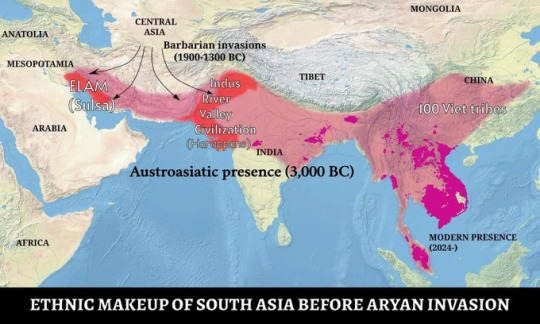
What people don't realize is all these regions shown here were not monolithic and locked down in terms of migration, trade, or any of that. The old world traded A LOT. People migrated by land and sea. We have charts of the oceanic silk road trade routes
South Asia had a huge influence in South East Asia through the above mentioned ways, and so, believe it or not, yeah, people of all backgrounds got hinky and jiggy wit it (that's old people talk for the Gen Z's here - you'll get what it means when you're older) anyways, because of this South Asians are genetically really diverse which is cool and has led to all kinds of features that are all beautiful.
This is in part due to its location and natural wealth from agricultural possibilities to mineral riches and more.
It's had a rich/diverse population history over the ages, different migrations of people through it, and people engaging in endogamous practices which leads to the commonality of some kinds of features.
So you get both: wildly diverse and the common.
A great example of this is if you look up people from the Hunza Valley which is located in present day Pakistan in where you'll find folks with south asian features but also more european coloring in hair (up to ruddy blonde and red hair, yes) and lighter colored eyes. Random but related this is in part what led James Hilton, the writer behind the myth of Shangri-La, to come up with the place. It wasn't inspired by China, but what he had seen in the Hunza Valley
#ancient history#writers on tumblr#history#histoire#migration#historical maps#historically accurate#Aryan invasion theory#Indo-Aryan people#Vedic#vedic era#Indus Valley#south asia#southeast asia#asian history#south asian#Hunza valley#pakistan#james hilton#shangri-la#china#more you know#learn something new#learn history
4 notes
·
View notes
Text
The Local Cuisine of Hunza Valley, Pakistan
The local cuisine of Hunza Valley is known for its simplicity, healthfulness, and unique flavors. The region's cuisine largely reflects the agricultural practices and natural resources of the area. Here are some popular dishes and ingredients you can find in the traditional cuisine of Hunza Valley:
1. Chapshuro: A savory meat-filled bread, typically made with minced meat (often mutton or beef) and spices. It is cooked in a traditional tandoor (clay oven) and served hot.
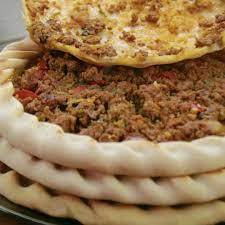
2. Harissa: A traditional porridge-like dish made with whole wheat and meat (usually chicken or lamb). The meat is slow-cooked with spices and then mixed with wheat to create a thick and hearty dish.
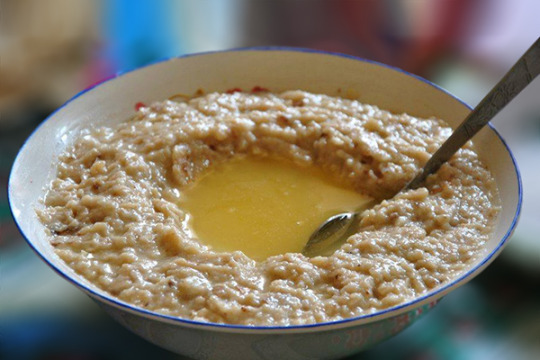
3. Momo (Mamtu): Dumplings filled with minced meat (mutton, beef, or chicken) and vegetables. They are usually steamed and served with a spicy tomato-based dipping sauce.
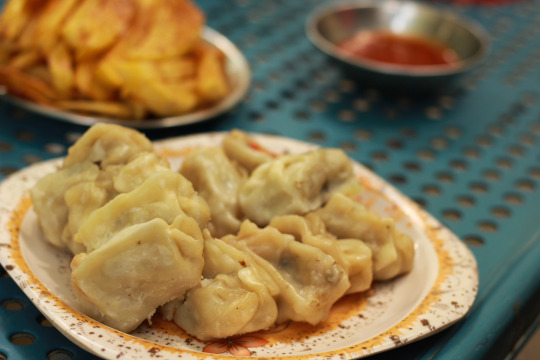
4. Dirham Fitti: A popular breakfast dish made with wheat dough that is rolled and cooked on a griddle. It is usually served with butter or ghee and accompanied by local cheese or honey.
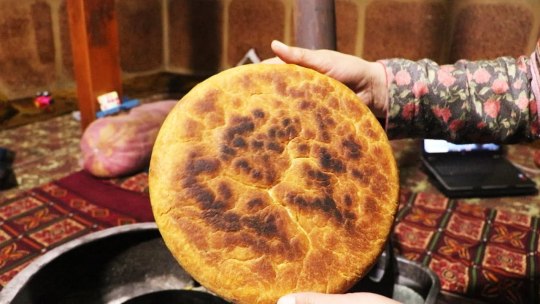
5. Apricot-Based Dishes: Hunza Valley is famous for its apricots, and the fruit is used in various dishes. Apricot oil is often used in cooking, and dried apricots are used in stews and desserts. One popular apricot dish is "Ghulay Poot," a sweet and sour apricot soup.
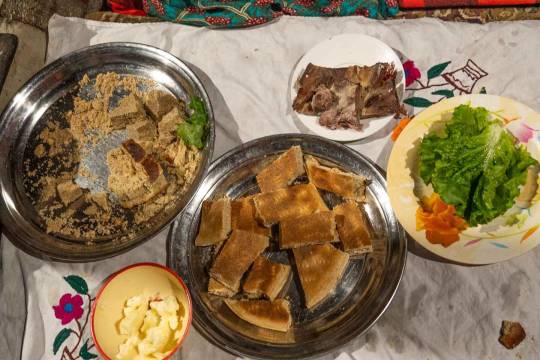
6. Local Cheese: Hunza Valley is known for its fresh and organic dairy products. One of the most famous cheeses is "Chhurpi," a hard cheese made from yak's milk. It is often served as a snack or grated over dishes.
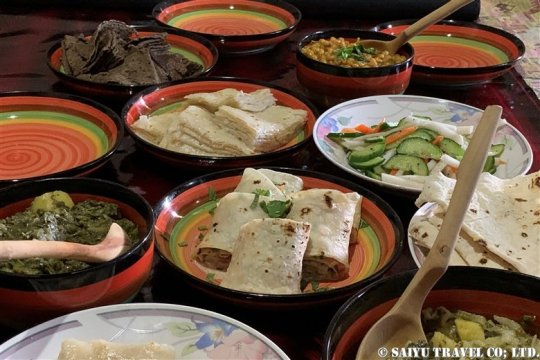
7. Butter Tea: A traditional hot beverage made by boiling tea leaves with water, salt, and butter. It is a staple drink in the region and is believed to provide warmth and energy in the cold mountainous climate.
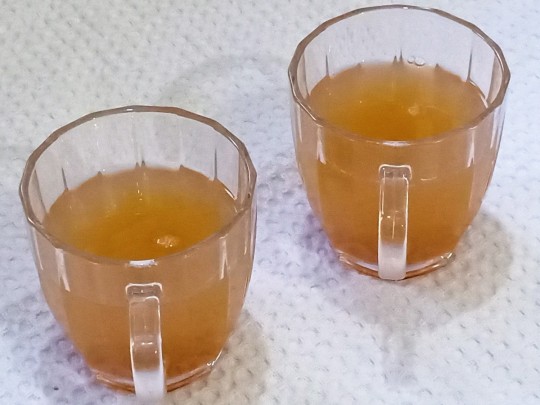
8. Walnut Cake: Hunza Valley is abundant in walnut orchards, and walnuts are often used in desserts. Walnut cake is a popular sweet treat made with ground walnuts, sugar, and eggs.
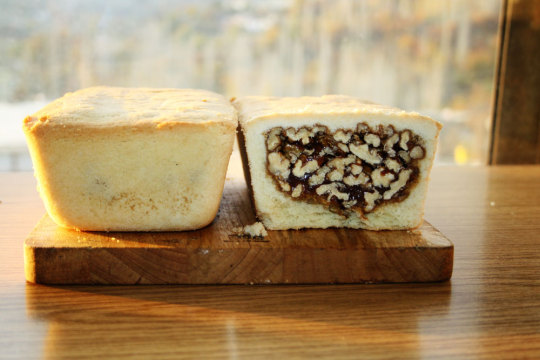
9. Local Bread: The bread in Hunza Valley is typically made with whole wheat flour and baked in traditional tandoors. "Skit" is a popular type of bread, which is thin and unleavened.

These are just a few examples of the delightful cuisine you can experience in the Hunza Valley. The focus on fresh, locally sourced ingredients, and the simplicity of the recipes make the food of Hunza Valley both delicious and healthy.
Planning a trip of Hunza Valley, Pakistan with Adventure Seekers Club sounds exciting. The trip can be customized based on your preferences, group size, and the availability of activities.
6 notes
·
View notes
Text
Top Locations for Vacation Homes in Pakistan
Pakistan offers an abundance of scenic and serene locations, making it a fantastic choice for vacation homes. Whether you're seeking the cool, crisp air of the mountains or the quiet charm of coastal retreats, the country has something for every type of traveler. Here are some of the top locations for vacation homes in Pakistan:
MurreeLocated just a few hours from Islamabad, Murree is a popular hill station offering lush greenery, pine forests, and breathtaking mountain views. It’s perfect for those seeking tranquility, and the area’s real estate market offers a range of options for vacation homes.
Hunza ValleyKnown for its dramatic landscapes, Hunza Valley is one of the most sought-after destinations for a second home. With its picturesque valleys, serene lakes, and towering peaks, it's an ideal location for nature lovers.
Naran KaghanNaran Kaghan offers some of the most beautiful landscapes in Pakistan. With its pristine lakes and rugged terrain, this area is a favorite among those who love the outdoors and would enjoy owning a vacation home in the midst of nature.
Gorakh Hill StationFor those looking to escape the crowds, Gorakh Hill Station in Sindh provides a quiet retreat. Located in the Kirthar range, it offers cool weather, scenic beauty, and a peaceful environment.
KarimabadSituated in the Hunza region, Karimabad is another excellent choice for a vacation home. Its awe-inspiring beauty, coupled with cultural richness, makes it an attractive place for investment.
#blue world city#Vacation Homes#Pakistan Vacation Destinations#Murree#Hunza#Naran Kaghan#Gorakh Hill#Karimabad#Real Estate#Second Homes in Pakistan#Scenic Vacation Properties
0 notes
Text

Sultana Nasab, the third Pakistani woman to summit K2, achieved an incredible milestone on 28th July 2024 when she reached the top of the world’s second-highest mountain. What makes her feat even more extraordinary is that she was five months pregnant then. Four months after this historic climb, Sultana gave birth to a healthy baby girl on 25th November 2024. Her journey has inspired many, showing the strength and resilience of women, especially those living in challenging mountain regions. Nasab, hailing from the mountaineering hub of Shimshal Hunza Valley, was the only member of her six-women expedition team, led by renowned Pakistani mountaineer Sirbaz Khan, to summit K2 successfully.
#adventure travel#mountain climbing#trekking#climbing#travel#outdoors#mountaineering#hiking and camping#alpine skiing
0 notes
Text
Wall Art for Homes in Pakistan – Best Designs
Wall Art for Homes in Pakistan – Best Designs
Wall art is an essential component of interior design, adding personality, warmth, and style to any space. In Pakistan, with its rich cultural heritage and growing design scene, wall art has gained popularity as a powerful means of enhancing home decor. Here’s a guide to some of the best wall art designs for homes in Pakistan, combining local culture, modern aesthetics, and practical tips.
Traditional Calligraphy Art
Calligraphy is a celebrated form of art in Pakistan, especially Arabic calligraphy. Traditional calligraphy adds an elegant, spiritual touch to interiors, often featuring verses from the Quran or other Islamic phrases. This art form combines rich color palettes and intricate scripts, making it a stunning focal point for living rooms or entryways.
Tips for Incorporating Calligraphy Art
Use frames with intricate designs to enhance the traditional feel.
Place calligraphy art in a prominent position to draw attention.
Opt for metallic paints or gold foil prints for a luxurious look.
Truck Art-Inspired Wall Pieces
Truck art, a unique Pakistani art form known for its vibrant colors and bold designs, is a fantastic choice for adding a splash of color and energy to any room. From canvases to metal wall hangings, truck art-inspired pieces add a quirky, local flair to homes.
Tips for Using Truck Art in Your Decor
Use in areas with neutral walls to make the colors stand out.
Mix truck art with modern furniture for an eclectic style.
Add a few small truck art accents, like mirrors or trays, to tie the look together.
Landscape Paintings of Pakistan
Pakistan boasts diverse landscapes, from the Himalayas to coastal regions. Landscape paintings, whether realistic or abstract, can transport the viewer to these scenic locations. These pieces are ideal for nature lovers and can create a serene environment in bedrooms or living rooms.
Suggestions for Landscape Wall Art
Use large, framed paintings for maximum impact.
Opt for pieces depicting beloved spots like Hunza Valley or Swat for a personal connection.
Choose softer color palettes for a more calming effect.
Abstract and Modern Art
For those seeking a contemporary aesthetic, abstract art pieces provide sophistication and versatility. Modern art often uses bold colors and shapes, making it ideal for homes with minimalist or modern decor. Abstract wall art can be customized to fit any color scheme, adding depth and interest to the decor.
Tips for Choosing Abstract Art
Match color tones with your existing decor for a cohesive look.
Use oversized pieces to make a bold statement in open spaces.
Layer different abstract pieces for a curated gallery wall effect.
Handcrafted Textile Wall Art
Handcrafted textiles are another beautiful choice, reflecting Pakistan’s rich history of textile artistry. Embroidered wall hangings, tapestries, and fabric-based frames add texture and warmth. These pieces work especially well in rustic or traditional Pakistani homes.
Ideas for Textile Wall Art Placement
Hang textile art above the bed for a cozy, layered look.
Use smaller embroidered frames in entryways or hallways.
Mix and match with other art forms to create a culturally rich gallery wall.
Mirrors with Decorative Frames
Decorative mirrors double as wall art and functional decor. Mirrors can help make small rooms appear larger and add a stylish touch to any space. In Pakistan, mirrors with ornate, handcrafted frames—often in brass or wood—fit well with both traditional and modern interiors.
Placement and Styling Ideas for Mirrors
Place mirrors across from windows to enhance natural light.
Use in smaller rooms, like bathrooms or hallways, for a spacious effect.
Combine with other art pieces on the same wall for a dynamic display.
Nature and Botanical Prints
Nature-inspired prints, including botanical illustrations, are a soothing and timeless choice for any home. In Pakistan, incorporating native plants or floral patterns adds a local flavor, creating a sense of connection to nature indoors.
Tips for Botanical Prints
Frame botanical prints in sets to create a cohesive display.
Use smaller prints in kitchens or bathrooms for a touch of greenery.
Choose frames that complement natural elements, such as wooden or earthy tones.
Personalized Family Wall Art
For a personal touch, display family photos in creative ways. Gallery walls with a mix of family photos, quotes, and travel memories can create a warm, welcoming vibe. Personalized family art makes a house feel like a true home and is an enduring way to celebrate cherished memories.
Ideas for Family Art Walls
Use frames of varying sizes for an eclectic look.
Mix photos with meaningful decor, like maps of favorite places or family initials.
Create a black-and-white photo wall for a cohesive, classic style.
Final Thoughts
Wall art offers endless possibilities for enhancing the ambiance and beauty of homes. Pakistani handicraft From calligraphy and truck art to landscape paintings and family photos, there’s something to suit every taste. By selecting pieces that resonate with your personality and style, you can create a home that truly feels like your own.

0 notes
Text
Exploring the Majestic Pakistan Karakoram Highway: Ultimate Guide

# Exploring the Majestic Pakistan Karakoram Highway: Ultimate Guide---
Introduction
Imagine traversing through one of the world's most breathtaking landscapes, surrounded by towering peaks, cascading glaciers, and ancient cultures. This journey is made possible by the legendary Pakistan Karakoram Highway, a route that is not just a road but a passage to awe-inspiring beauty and rich history. In this ultimate guide, we will delve deep into the wonders of the Pakistan Karakoram Highway, exploring its significance, highlighting its treasures, and equipping you with the knowledge to embark on your own adventure.
Main Content
The History and Importance of the Karakoram Highway The Pakistan Karakoram Highway is not merely a road but a testament to human ingenuity and perseverance. Constructed in the 1960s, this marvel of engineering connects Pakistan and China, serving as a vital trade route and a gateway to cultural exchange. Here are some key aspects to consider: - The inception of the highway amidst challenging terrain and harsh weather conditions. - The strategic importance of the highway for trade and geopolitical relations. - The cultural significance of connecting diverse communities through this route.Planning Your Journey on the Karakoram Highway Before embarking on your adventure along the Pakistan Karakoram Highway, careful planning is essential to ensure a safe and memorable experience. Consider the following tips: - Acquire the necessary permits and documentation for border crossings. - Pack essential items such as warm clothing, first-aid kit, and sufficient provisions. - Plan your itinerary with flexibility to account for weather conditions and unexpected delays.Must-Visit Destinations Along the Karakoram Highway As you traverse through the rugged terrain of the Pakistan Karakoram Highway, several destinations beckon with their unique charm and allure. Here are some must-visit places along the route: - Hunza Valley: Known for its stunning vistas and hospitable locals. - Passu Cones: Majestic peaks that captivate with their beauty. - Khunjerab Pass: The highest paved border crossing in the world offering panoramic views.Experiencing the Rich Cultural Tapestry Along the Karakoram Highway The Pakistan Karakoram Highway is not just about the scenic landscapes but also a journey through diverse cultures and traditions. Here is a glimpse into the vibrant cultural tapestry you will encounter: - Wakhi and Burusho communities: Discover the unique customs and heritage of these indigenous peoples. - Silk Route Heritage Gallery: A treasure trove of artifacts showcasing the historical significance of the region.Adventurous Activities and Trekking Opportunities For adrenaline junkies and nature enthusiasts, the Pakistan Karakoram Highway offers ample opportunities for adventure and exploration. Whether you seek thrilling activities or serene treks, you will find something to suit your taste: - Rafting in Indus River: Challenge yourself with exhilarating rapids amidst stunning landscapes. - Trekking to Rakaposhi Base Camp: Embark on a trekking expedition to witness the grandeur of Rakaposhi peak up close.Wildlife and Conservation Efforts Along the Karakoram Highway The regions surrounding the Pakistan Karakoram Highway are not just geographically diverse but also rich in biodiversity. Take a closer look at the unique wildlife and conservation initiatives in the area: - Snow leopards: Discover the elusive yet majestic residents of the Karakoram range. - Conservation efforts: Learn about the conservation projects aimed at preserving the fragile ecosystem of the region.
Conclusion
In conclusion, the Pakistan Karakoram Highway stands as a testament to nature's grandeur and human resilience, offering a once-in-a-lifetime journey through awe-inspiring landscapes and vibrant cultures. As you prepare to embark on this unforgettable adventure, remember that the experiences along the highway are not just about the destinations but the transformative journey itself. Embrace the challenges, savor the moments, and create memories that will last a lifetime.Explore the Pakistan Karakoram Highway with an open heart and mind, and you will be rewarded with experiences that are as diverse and magnificent as the land itself.
Frequently Asked Questions
- What is the best time to travel on the Pakistan Karakoram Highway? The best time to travel on the Pakistan Karakoram Highway is during the summer months from June to August when the weather is milder and most of the routes are accessible.- Are there any altitude-related concerns while traveling on the Karakoram Highway? Travelers should be mindful of the altitude changes along the Pakistan Karakoram Highway and take precautionary measures to avoid altitude sickness. It is recommended to acclimatize gradually and stay hydrated.- Can foreign tourists easily access the Pakistan Karakoram Highway? Foreign tourists can access the Pakistan Karakoram Highway by obtaining the necessary permits and adhering to the visa regulations of Pakistan. It is advisable to check the latest travel advisories before planning your journey.- What are the accommodation options available along the Karakoram Highway? Accommodation along the Pakistan Karakoram Highway ranges from basic guesthouses to upscale hotels, with options to suit every budget. It is recommended to book accommodation in advance during peak tourist seasons.- Is the Pakistan Karakoram Highway safe for solo travelers? While the Pakistan Karakoram Highway is generally considered safe for travelers, solo travelers are advised to exercise caution, especially in remote areas. It is advisable to travel with a guide or in a group for added security.
Tags
Pakistan Karakoram Highway, Hunza Valley, Silk Route, Adventure Travel, Cultural Exploration, Wildlife Conservation, Trekking, Travel Planning, Summer Travel, Altitude Sickness. Read the full article
0 notes
Text
🌄 Experience the Magic of Hunza Valley – A Paradise on Earth
Nestled in the Gilgit-Baltistan region of Pakistan, Hunza Valley is a breathtaking destination renowned for its majestic mountains, lush green terraced fields, and vibrant culture. Often referred to as a “paradise on Earth,” the valley boasts some of the most stunning landscapes in the world, including views of towering peaks like Rakaposhi, Ultar Sar, and Ladyfinger. Hunza Valley is a haven for…
#Adventure tourism Pakistan#Altit Fort#Attabad Lake#Baltit Fort#best travel destinations#cultural heritage Hunza#explore Hunza#Explore Nature#family-friendly travel#Gilgit-Baltistan#hiking Hunza#historic forts#Hunza adventure#Hunza autumn#Hunza cultural tours#Hunza lakes#Hunza mountains#Hunza photography spots#Hunza spring#Hunza vacations#Hunza Valley#Hunza Valley experience#hunza valley hotels#Hunza Valley trekking#Karakoram Highway#Karimabad Hunza#Kumrat Tourism Pvt Ltd#mountain views Hunza#nature in Hunza#outdoor activities Pakistan
0 notes
Text

“Exploring the Enchanting Northern Areas of Pakistan: A Paradise for Adventure and Nature Lovers”
Nestled amidst the majestic Himalayas, Karakoram, and Hindu Kush ranges lies a hidden gem waiting to be discovered - the Northern Areas of Pakistan. This region, renowned for its breathtaking landscapes, rich cultural heritage, and warm hospitality, offers a haven for adventure seekers and nature enthusiasts alike.
The Northern Areas of Pakistan boast some of the most awe-inspiring scenery in the world. From the verdant valleys of Swat and Hunza to the snow-capped peaks of Nanga Parbat and K2, every corner of this region is a photographer's paradise. The crystal-clear lakes, including the iconic Attabad Lake with its mesmerizing turquoise waters, add to the ethereal beauty of the landscape.
For adrenaline junkies, the Northern Areas offer a plethora of thrilling activities. Trekking in the Karakoram Range, including the famous trek to Fairy Meadows at the base of Nanga Parbat, is an experience like no other. Rock climbing, paragliding, and white-water rafting on the Indus River are also popular among adventure enthusiasts.
The Northern Areas of Pakistan are steeped in history and culture. The ancient Silk Road passes through this region, leaving behind traces of diverse cultural influences. Explore the historic Baltit Fort in Hunza, witness the traditional festivals of Kalash Valley, or immerse yourself in the centuries-old customs of the Shandur Polo Festival.
One of the most endearing aspects of visiting the Northern Areas is the warm hospitality of the locals. Whether you're staying in a traditional guesthouse in Skardu or camping under the stars in Fairy Meadows, you'll be welcomed with open arms and treated to the renowned Pakistani hospitality.
No visit to the Northern Areas is complete without sampling the local cuisine. Indulge in hearty servings of chapli kebabs, freshly baked naan bread, and aromatic biryanis. Don't miss out on tasting the famed Hunza apricots and dried fruits, a local specialty.
As you explore the Northern Areas, remember to tread lightly and respect the environment and local communities. Try to opt for eco-friendly accommodations, support local businesses, and follow responsible trekking practices to ensure the preservation of this natural paradise for future generations.
The Northern Areas of Pakistan are a treasure trove waiting to be explored. Whether you seek adventure, tranquility, or cultural immersion, this region offers a truly unforgettable travel experience. So pack your bags, embark on a journey of discovery, and let the wonders of the Northern Areas captivate your soul.
Asia Rahman Khan Lodhi [Consul Press at the Consulate General of Pakistan, Hong Kong (SAR) & Macau (SAR)]
#HKPressSection#HongKongPS#PressSectionInHK#HKInformationWing#HKPressPower#PakInHK#HongKongPublicDiplomacy#PressSectionHK#MediaRightsHK#CGHK_Press_Section#CGHK_press_section#CGHK_Press_section#CG_HK_Press_section#CG_HK_Press_Section#CGHK_Information_Wing#CGHK_information_wing#Information_Wing_HK
0 notes
Text
How to Visit the Most Beautiful Places of Pakistan?
Pakistan is a land of diverse landscapes and breathtaking beauty, offering a wealth of natural wonders and historical sites. From the majestic peaks of the north to the serene valleys and stunning coastal areas, there's something for every traveler. Here’s your guide to visiting the most beautiful places in Pakistan, with tips on how to make your journey smooth and enjoyable with GoRide.Pk, your reliable car rental partner.
1. Hunza Valley
The Jewel of Pakistan: Hunza Valley, located in the Gilgit-Baltistan region, is renowned for its stunning mountainous scenery, vibrant culture, and welcoming people. Key attractions include the Rakaposhi Viewpoint, Karimabad, and the ancient Baltit and Altit forts.
Travel Tip: To explore Hunza at your own pace, rent a comfortable car from GoRide.Pk. Our well-maintained vehicles are perfect for navigating the valley's rugged terrain.
2. Skardu
Gateway to the Mighty Karakorams: Skardu is a paradise for trekkers and nature lovers, offering access to some of the world's highest peaks, including K2. Don't miss Shangrila Lake, Deosai National Park, and the serene Satpara Lake.
Travel Tip: Book a reliable and spacious vehicle from GoRide.Pk to ensure a comfortable journey to Skardu's remote and beautiful locations.
3. Swat Valley
The Switzerland of Pakistan: Swat Valley, with its lush green valleys, snow-capped mountains, and crystal-clear rivers, is a must-visit. Popular spots include Mingora, Malam Jabba, and Kalam Valley.
0 notes
Text
Exploring the Enchanting Beauty of Hunza Valley: A Paradise on Earth
Embarking on a Hunza Tour: Unforgettable Experiences Await
Embarking on a trip to Hunza Valley is an adventure like no other. Whether you’re an avid trekker, a history enthusiast, or simply a nature lover, Hunza has something to offer for everyone. One of the highlights of any visit to Hunza is exploring the ancient Baltit and Altit Forts, which stand as proud symbols of the region’s rich cultural heritage. These centuries-old forts offer a glimpse into Hunza’s fascinating history and provide stunning views of the surrounding landscape.
For those seeking outdoor thrills, Hunza Valley offers a plethora of trekking and hiking opportunities. Whether you’re trekking to the iconic Fairy Meadows or conquering the challenging trails of Passu Glacier, you’re guaranteed to be rewarded with jaw-dropping vistas and a sense of accomplishment. Additionally, adventure seekers can indulge in activities such as rock climbing and mountaineering, with the iconic “Hard Rock Hunza” serving as a popular destination for climbers from around the world.

READ MORE
0 notes
Link
0 notes